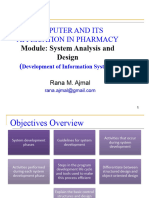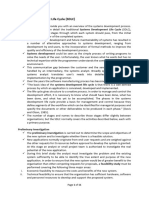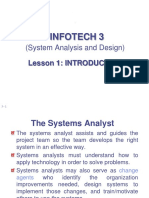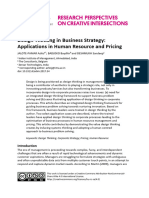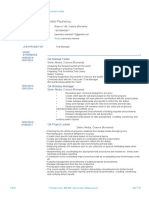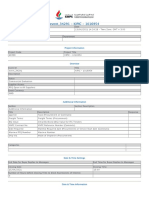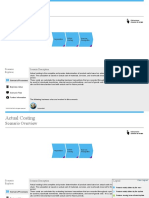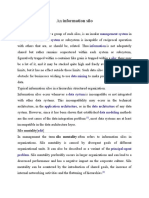0% found this document useful (0 votes)
27 views37 pagesSystem Analysis and Design (Lecture 1)
The document provides an overview of system analysis and design, emphasizing the importance of understanding organizational needs to create valuable systems. It outlines the roles and skills of systems analysts, the phases of the System Development Life Cycle (SDLC), and various methodologies for system development. Key phases include planning, analysis, design, and implementation, each with specific deliverables and processes.
Uploaded by
mariammagdy489Copyright
© © All Rights Reserved
We take content rights seriously. If you suspect this is your content, claim it here.
Available Formats
Download as PDF, TXT or read online on Scribd
0% found this document useful (0 votes)
27 views37 pagesSystem Analysis and Design (Lecture 1)
The document provides an overview of system analysis and design, emphasizing the importance of understanding organizational needs to create valuable systems. It outlines the roles and skills of systems analysts, the phases of the System Development Life Cycle (SDLC), and various methodologies for system development. Key phases include planning, analysis, design, and implementation, each with specific deliverables and processes.
Uploaded by
mariammagdy489Copyright
© © All Rights Reserved
We take content rights seriously. If you suspect this is your content, claim it here.
Available Formats
Download as PDF, TXT or read online on Scribd
/ 37









